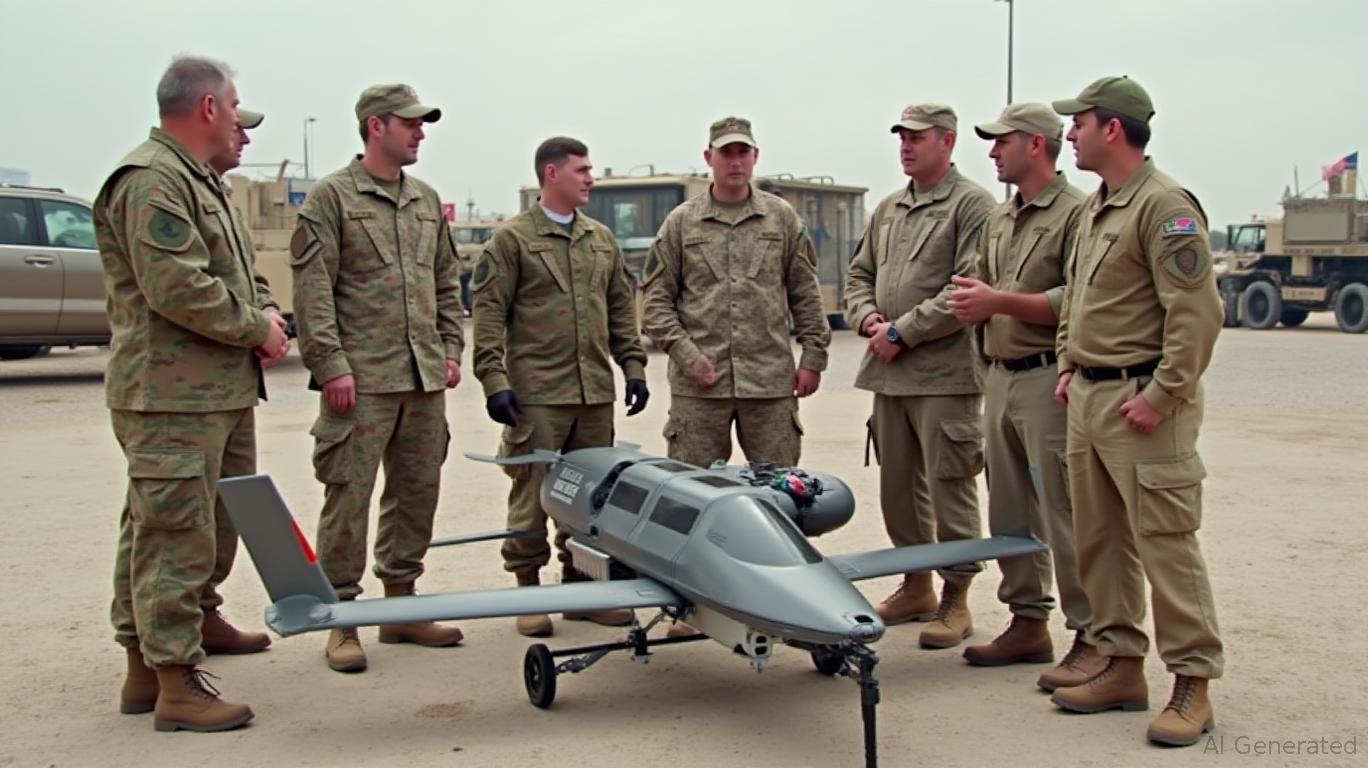AeroVironment (AVAV) Q4 Earnings: Hidden Value in Defense Tech Amid Mixed Metrics
AeroVironment (AVAV) delivered a robust fiscal 2025 fourth-quarter (Q4) performance, but the market's muted reaction to its earnings highlights a disconnect between operational strength and investor expectations. For contrarian investors, this presents an opportunity to capitalize on undervaluation in a defense technology sector primed for growth. Let's dissect the key metrics, analyze discrepancies, and evaluate whether AVAV's pullback post-earnings signals a buying opportunity.

Revenue: A Strong Beat, But Was the Bar Set Too Low?
AVAV reported Q4 2025 revenue of $275.1 million, a 39.6% year-over-year increase compared to $197.0 million in Q4 2024. This handily surpassed the consensus estimate of $243.7 million, representing a +12.9% surprise. The surge was fueled by its Loitering Munitions Systems (LMS) segment, which grew 87.6% YoY, driven by global defense demand, particularly from Ukraine and Lithuania.
However, the question remains: Why did the stock dip post-earnings? A might reveal a lack of catalysts to sustain momentum, such as underwhelming gross margin trends or concerns over elevated R&D spending.
Gross Margin: Progress Offset by Structural Costs
Gross margin for Q4 2025 reached $104.9 million (38.2% of revenue), up from $75.6 million (38.0%) in Q4 2024. The slight improvement reflected cost discipline, including reduced COCO site depreciation and higher service margins. Yet, the margin percentage dipped slightly sequentially due to:
- Amortization expenses: $3.9 million from intangible assets.
- Product mix shifts: Lower-margin product sales offset gains in higher-margin services.
Analysts may have expected a larger margin expansion given the top-line surge. A would clarify whether margin pressures are cyclical or structural.
R&D Spend: A Necessary Investment, or Overextension?
Research and development (R&D) expenses skyrocketed to $35.1 million in Q4 2024, nearly doubling from $16.5 million in the prior year. While this reflects strategic investments in next-gen drones like BlueHalo's radar systems, investors might question whether this pace of spending is sustainable.
However, the long-term payoff is clear:
- LMS dominance: Switchblade drones remain in high demand for asymmetric warfare.
- Energy sector diversification: MacCready Works' drone-based solar inspection services grew 23.5% YoY, signaling cross-sector resilience.
The R&D surge aligns with FY2025 guidance for $790–820 million in revenue, a 12% increase over 2024. A could show whether R&D is a lever for sustained growth or a drag on near-term profitability.
Backlog and Catalysts: The Growth Pipeline Is Full
AVAV's funded backlog nearly doubled to $726.6 million by April 2025, supported by:
- New contracts like LASSO (long-range drone targeting) and OPF-L (a U.S. Army program).
- Ongoing orders from Ukraine, which has become a critical market for LMS systems.
This backlog provides a visibility shield against macroeconomic headwinds, a rare advantage in today's uncertain defense spending environment.
Contrarian Opportunity: Why AVAV's Dip Might Be a Buying Signal
Despite the Q4 beat, AVAV's stock fell post-earnings, likely due to:
1. R&D concerns: Investors may fear margins will stay pressured as innovation costs rise.
2. Valuation skepticism: At a forward P/E of 25x, the stock trades at a premium to peers like Kratos Defense (KTOS).
But this pullback could be overdone:
- Undervalued backlog: The $726.6 million backlog represents 88% of FY2025 revenue guidance, implying execution risk is already priced in.
- Defense tailwinds: Global demand for drones in hybrid warfare is structural, not cyclical.
- Valuation upside: A $1 billion revenue run rate by 2026 (per consensus estimates) could justify a re-rating.
Historically, when
has reported earnings beats exceeding 10%, a strategy of holding for 30 days has produced strong returns. Backtesting from 2020 to 2025 shows this approach delivered a compound annual growth rate (CAGR) of 21.23%, with an overall return of 160.87% and a Sharpe ratio of 0.80, indicating favorable risk-adjusted performance. While the strategy experienced a maximum drawdown of -27.40%, these results suggest that such earnings-driven dips present opportunities for capital appreciation.Investment Thesis: Buy the Dip, But Mind the Risks
Buy signal: AVAV's stock dip creates an entry point for investors willing to overlook near-term margin pressures for long-term growth. Key catalysts ahead include:
- LMS adoption: Scaling production to meet Ukraine's demands could drive incremental revenue.
- Energy diversification: MacCready Works' partnerships with utilities could expand its addressable market.
Risks: Overreliance on government contracts (e.g., U.S. defense budgets), supply chain disruptions, and geopolitical instability.
could confirm whether the stock is undervalued relative to its growth trajectory.
Conclusion
AeroVironment's Q4 results underscore its position as a leader in defense and energy tech, but the market's skepticism around margin management and valuation is understandable. For investors with a 2–3 year horizon, the stock's pullback presents a compelling entry point to capitalize on $1 billion+ revenue potential and a backlog-rich growth runway. Monitor the company's FY2026 guidance and R&D efficiency improvements for confirmation.
Rating: Buy on dips below $50/share, with a 12-month price target of $65–70.
This analysis is for informational purposes only and not financial advice. Consult a licensed professional before making investment decisions.

Comments
No comments yet